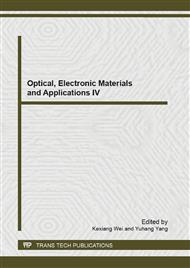p.217
p.223
p.228
p.233
p.239
p.244
p.250
p.255
p.260
Time-Arrival Location of Seismic P-Wave Based on Wavelet Transform
Abstract:
The automatic pick of seismic first arrivals is a foundational problem in Seismic Exploration. Picking the first arrival of P-wave is an important problem in the seismic research field. The modulus maxima of wavelet transform is a useful method for picking up the singularities of function. For applying the modulus maxima method to investigate the arrival time of P-wave, it is necessary to eliminate the influence of random factors. Based on standard deviation, we present a method to reduce the influence of random factors. Then we get an approach to detect the arrival time of P-wave by means of window energy ratio factors. The results of data analysis indicate that our method is more effective.
Info:
Periodical:
Pages:
239-243
Citation:
Online since:
July 2013
Authors:
Price:
Сopyright:
© 2013 Trans Tech Publications Ltd. All Rights Reserved
Share:
Citation:


